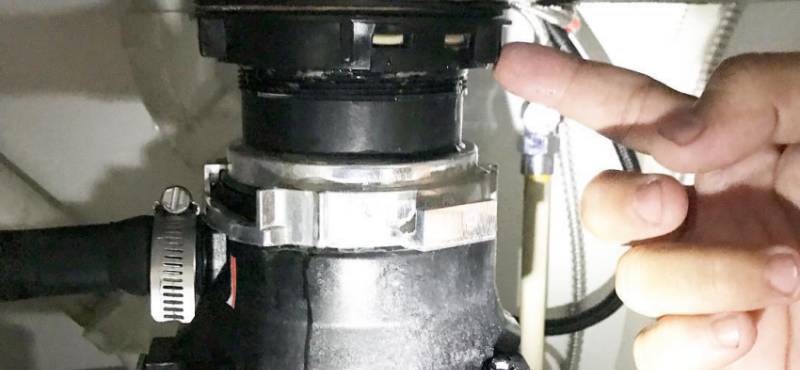Rapid Solutions for Fixing a Dripping Waste Disposal Unit
Rapid Solutions for Fixing a Dripping Waste Disposal Unit
Blog Article
Just about every person has got his or her own thinking about The Handy Guide To Fixing Your Garbage Disposal Leaking.

Garbage disposals are essential cooking area home appliances that help in getting rid of food waste successfully. Nonetheless, a dripping waste disposal unit can be a discouraging and unpleasant trouble to deal with. Thankfully, lots of leaks can be fixed easily with a few simple steps. In this write-up, we will certainly review just how to take care of a leaking waste disposal unit effectively.
Introduction
Waste disposal unit are mounted under kitchen area sinks and are designed to shred food waste right into smaller pieces, permitting it to travel through the pipes system quickly. While these devices are normally trustworthy, leakages can happen with time due to wear and tear, loosened links, or damage to the unit.
Common Sources Of Leaks in Garbage Disposals
Worn Seals and Gaskets
Seals and gaskets play a vital function in preventing water from dripping out of the waste disposal unit. Over time, these elements can deteriorate, resulting in leakages around the disposal unit.
Loose Links
The connections in between the waste disposal unit and the plumbing system can come to be loosened over time, triggering water to leak out throughout procedure.
Splits or Holes in the Disposal Device
Physical damage to the garbage disposal, such as splits or holes in the real estate, can additionally lead to leaks.
Identifying the Source of the Leakage
Prior to attempting to fix a dripping waste disposal unit, it is important to recognize the source of the leakage. This can commonly be done with visual inspection or by carrying out straightforward examinations.
Visual Evaluation
Check the garbage disposal device thoroughly for any type of signs of water leak. Pay very close attention to areas around seals, gaskets, and link points.
Checking for Leakages
One means to examine for leakages is by running water through the disposal system and checking for any noticeable signs of leak.
Tools and Products Needed for Dealing With a Dripping Garbage Disposal
Before starting the repair work process, gather the essential devices and materials, including a screwdriver, flexible wrench, plumber's putty, substitute seals or gaskets, and epoxy or patching product for fixing fractures or openings.
Step-by-Step Overview to Dealing With a Dripping Waste Disposal Unit
Switch off the Power
Prior to trying any type of fixings, make certain that the power to the waste disposal unit system is turned off to prevent the danger of electrical shock.
Situate the Leakage
Determine the precise location of the leak and determine the cause.
Tighten up Connections
Use a wrench to tighten any type of loosened links in between the disposal device and the plumbing system.
Change Seals or Gaskets
If the leakage is because of worn seals or gaskets, eliminate the old parts and change them with brand-new ones.
Patching Splits or Holes
For fractures or holes in the disposal unit, usage epoxy or a suitable patching product to seal the damaged location.
Testing the Waste Disposal Unit After Repair Work
As soon as the repair service is full, test the waste disposal unit by running water with it to make sure that the leak has been resolved.
Preventive Maintenance Tips to Stay Clear Of Future Leaks
To avoid future leakages, it is essential to perform normal maintenance on your garbage disposal. This includes keeping it tidy, preventing placing non-food products or tough objects down the disposal, and occasionally looking for leakages or other issues.
Final thought
Finally, repairing a dripping garbage disposal is a fairly straightforward process that can be completed with standard tools and products. By adhering to the steps described in this article and exercising preventive maintenance, you can keep your garbage disposal in good working condition and prevent costly repair work in the future.
What to Do About a Leaking Garbage Disposal
A leaking garbage disposal often goes unnoticed until you confront a sopping cabinet, a foul-smelling puddle, or an audible drip-drip-drip from the unit. The fix can be frustrating, too, because the leak can stem from a number of components in the system. Fortunately, with a little sleuthing, you can zero in on the leak and—depending on the exact location—stop the icky oozing and repair the component that caused it. Worst case scenario, if it turns out that the garbage disposal must be replaced, installing a new one is a reasonable do-it-yourself task for those with basic plumbing skills. Read on to keep the cash you’d otherwise hand over to a pro.
Prepare to find the leak
Prior to testing the garbage disposal for leaks, unplug it at the wall outlet and turn off the power from the breaker box to prevent electrical shock. Then insert a watertight sink stopper into your sink drain and wipe the unit dry with a clean cloth. In any handy container, mix a few drops of food coloring into a few cups of water, and pour the dyed water onto the sink stopper to help you locate the leak.
Investigate the source
the top, where the disposal meets the sink drain the side, where the dishwasher hose or main drain pipe connects to the disposal or the bottom of the unit Inspect each of these locations while gliding a light-colored rag over the unit; the dyed water will readily show on the rag and reveal the location of the leak. If a leak isn’t immediately apparent, remove the sink stopper and pour a few more cups of dyed water down the sink drain, then check for leaks again. Leaks near the top of the unit are more likely to show themselves while the sink is plugged, while side and bottom leaks are more noticeable while the sink is unplugged.
The metal sink flange that sits directly inside the sink drain is typically sealed around the top with plumber’s putty (a clay-like sealant) and then secured from under the sink with bolts. If the plumber’s putty deteriorates, or the bolts loosen, the flange can no longer form a watertight seal between the sink drain and the disposal—which could cause a leak at the top of the unit.
To reseal the leaky flange, you must first detach the garbage disposal. Start by loosening the screws securing the main drain pipe to the disposal, then loosen the screws in the metal clamp securing the dishwasher hose to the disposal and detach the drain pipe and dishwasher hose from the disposal. Loosen the screws in the mounting ring that connects the disposal to the metal mounting assembly beneath the sink, then pull down the disposal and carefully set it on a clean, dry surface. Loosen the bolts in the mounting assembly with a wrench, then pull down the mounting assembly and set it near the disposal.

We had been shown that editorial about How to fix a pretty consistent leak from my garbage disposal through an acquaintance on our other domain. Sharing is nice. Helping others is fun. We cherish reading our article about Why Is .
Call Today Report this page